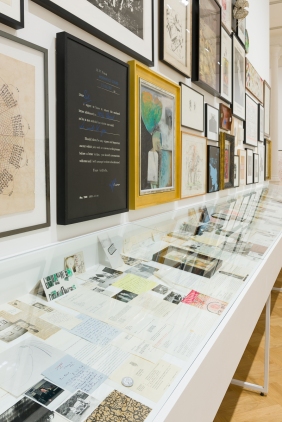
I have a piece in the Guardian about the closure of Food For Thought, one of London’s most charismatic and seemingly nuclear-proof (and I’m not just talking about the consistency of the scones) restaurants. It closes on June 21, rising costs – basically rents and wages to cover staff’s rents – forcing the owner Vanessa Garrett, to shut a business that has been successfully operating since 1971.
Food For Thought is one of those places that’s always been there. It was there when I prowled Neal Street on amateur shopping trips in the early 1990s. I knew, instinctively, that it was some sort of hippie joint, so went elsewhere, a teenage boy in thrall to the twin thrills of the Sex Pistols and bacon double cheeseburgers.
Years later, grown up somewhat, I began to eat there regularly, usually nabbing a takeaway from the ground floor during lunch breaks at Time Out. It always felt more than just a lunch venue. Without wanting to get too Sinclair about it, waiting in line at Food For Thought felt like a visit to polydimensional London, somewhere that had been quietly doing the same thing, for the same people, in the same place, for generations. Close your eyes, and you could be in 1970s London or even London in 2015. For secular souls, there are few areas that carry this atmosphere in quite such an effortless way, not so much a timewarp as timeless. It wasn’t dated, retro or old-fashioned, it just was.
I didn’t realise then quite how entwined Food For Thought was with the counterculture that spawned Time Out. When I tweeted about the closure of Food For Thought, the writer Richard King responded thoughtfully that: “FFT felt like one of the final remaining traces of the original Tony Elliott vision of London for Time Out.”
It was an astute observation. Food For Thought was born in the same spirit as Time Out, a desire to make London new, fresh, exciting, modern and funky, but also to make it, for want of a better word, good: cheap, utilitarian, healthy, an experience to expand the mind and reward the soul. London can still do this, but not in such a distinctive and understated political manner.
It went deeper. One of Food For Thought’s first chefs was Sue Miles, the wife of Barry Miles, founder of International Times, the underground newspaper from which Time Out hatched in 1968. Sue had learnt her trade at the Arts Lab, a counterculture take on the ICA that operated from Drury Street, and she later worked at Time Out, writing its first pair of London guides, which included enthusiastic reviews of Food For Thought.
What’s particularly depressing about the closure of Food For Thought is that it wasn’t doing anything wrong. It was popular, it was serving good food at reasonable prices. They could have expanded, sought outside investment and gone into the franchise business, but they felt that would dilute the experience. Why should they change when they were doing what they wanted and doing it well?
And it was this commitment to offering value for money – that deeply held desire to not rip off the consumer – that led to its demise. That was at the heart of what Food For Thought represented, and it is precisely the sort of thinking that doesn’t wash in rentier London, where even success is punished and landlords feel duty bound to wring more profit out of something they have done nothing to create, like Mafia bosses demanding their cut. People revolt when a government behaves this way, so why is it acceptable for landlords?
What a city we have created.

















